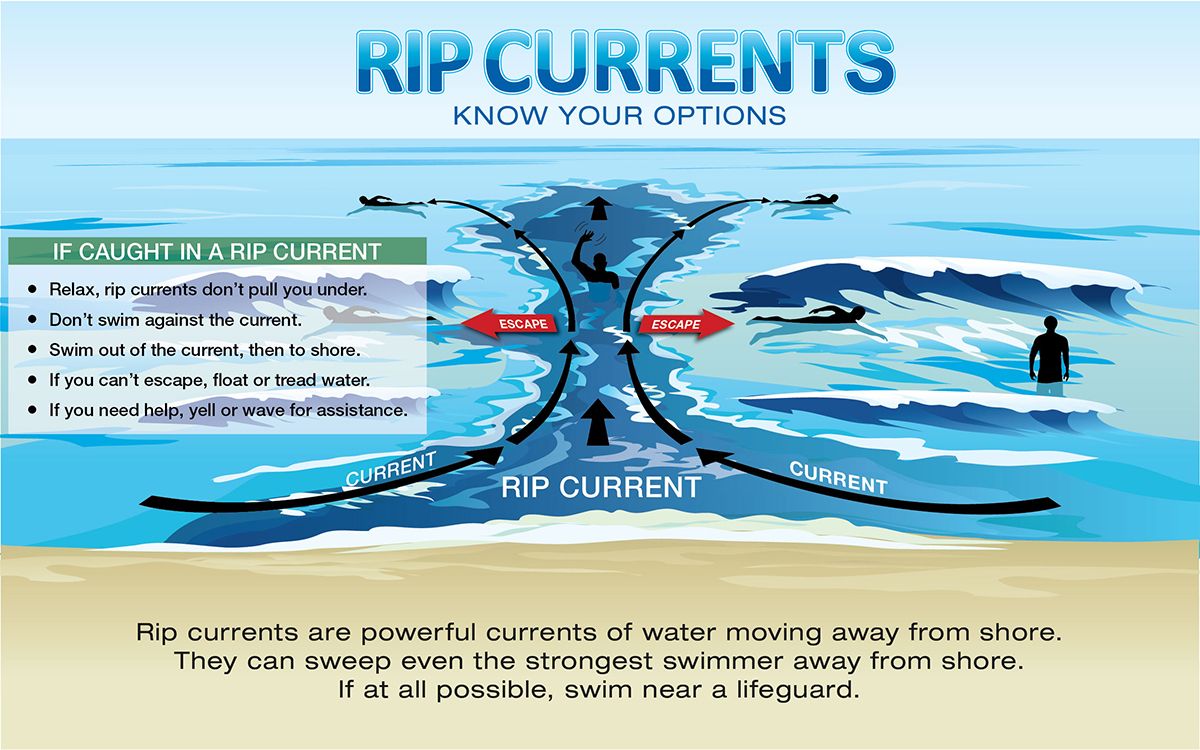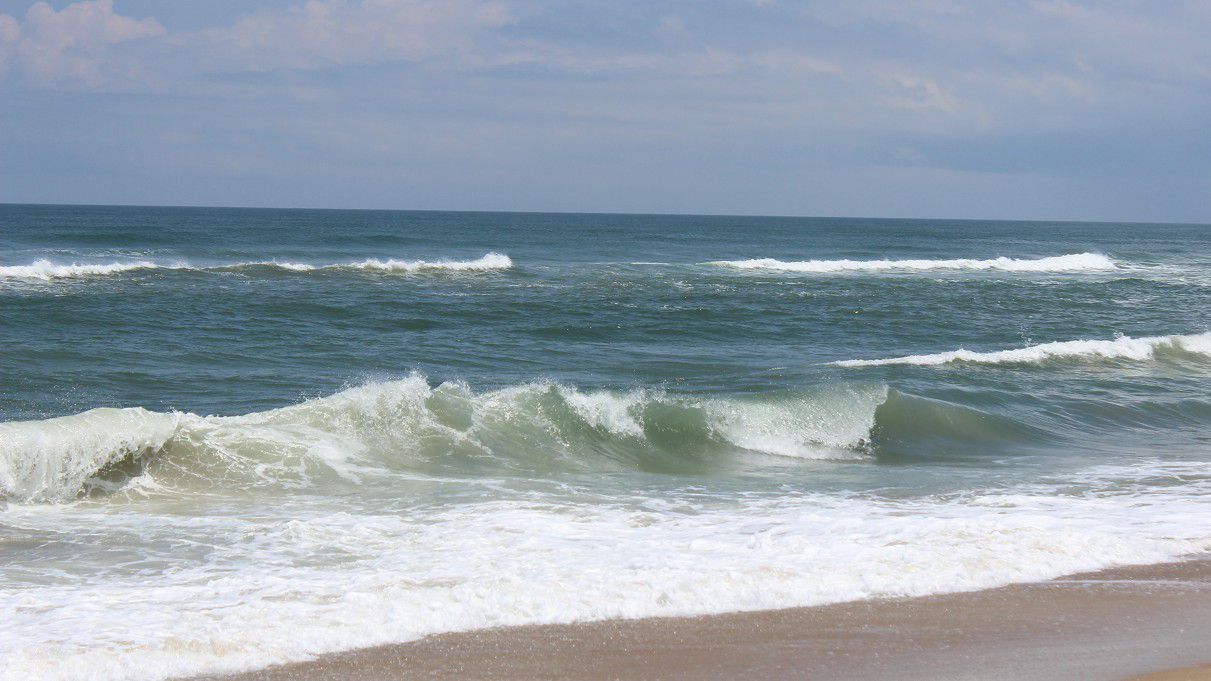Now that summer is in full swing, thousands of people will flock to the beaches to enjoy the surf, sand and sun.
When waves are large enough, rip currents and undertows can be dangerous. Can you spot a rip current? An undertow? A rip tide?
Many beach goers use these terms interchangeably, but each differs from the other and knowing the difference can make your day at the beach more safe.
Let’s start with a rip current. Rip currents are outflowing currents of water that can pull people hundreds to thousands of yards out to see.
When large breaking waves rush up the beach, water seeks to balance itself so it rushes back into the surfline.
Water seeks the path of least resistance, so when there is a break in a sandbar, a channel is formed and the water rushes out past the surfline in a current… hence the name rip current.

Even the best of swimmers cannot out swim a rip current. The best practice when caught in a rip current is to swim parallel to the beach and once out of the current, swim back to shore.
Rip tides are like rip currents in that they can take a swimmer hundreds or even thousands of feet away from the beach. The major difference is that a rip tide occurs with an outgoing tide.
The outgoing tide pulls fast moving currents of water from an inlet with a barrier beach out to sea. These rip tides can also happen near a river mouth, a lagoon or small bay.
It is very dangerous to swim in these types of inlets. Sailors can use them to their advantage when they go with the flow of the current. It is very difficult to sail against these tides.
Lastly, and least dangerous for adult swimmers, is the undertow. The undertow can be dangerous for small children and inexperienced swimmers.
When a wave breaks on or near the shore, there is a large and fast moving up-rush of water. Gravity rushes the water back down the beach as backwash.

When a wave breaks over a swimmer’s head, they are pulled down by a rush of water. This is the undertow. The undertow will stop at the next breaking wave. Undertows do not pull simmers more than a few yards.
However, a swimmer can get tumbled around and potentially hit the sand. This can lead to head and neck injuries. Undertows can be dangerous for inexperienced swimmers of small children, too.
Rip currents, rip tides, and undertows can be dangerous, especially for inexperienced swimmers. The best practice is to check in with a lifeguard when you arrive at the beach. They will know what hazards exist on their beach.
Our team of meteorologists dives deep into the science of weather and breaks down timely weather data and information. To view more weather and climate stories, check out our weather blogs section.










